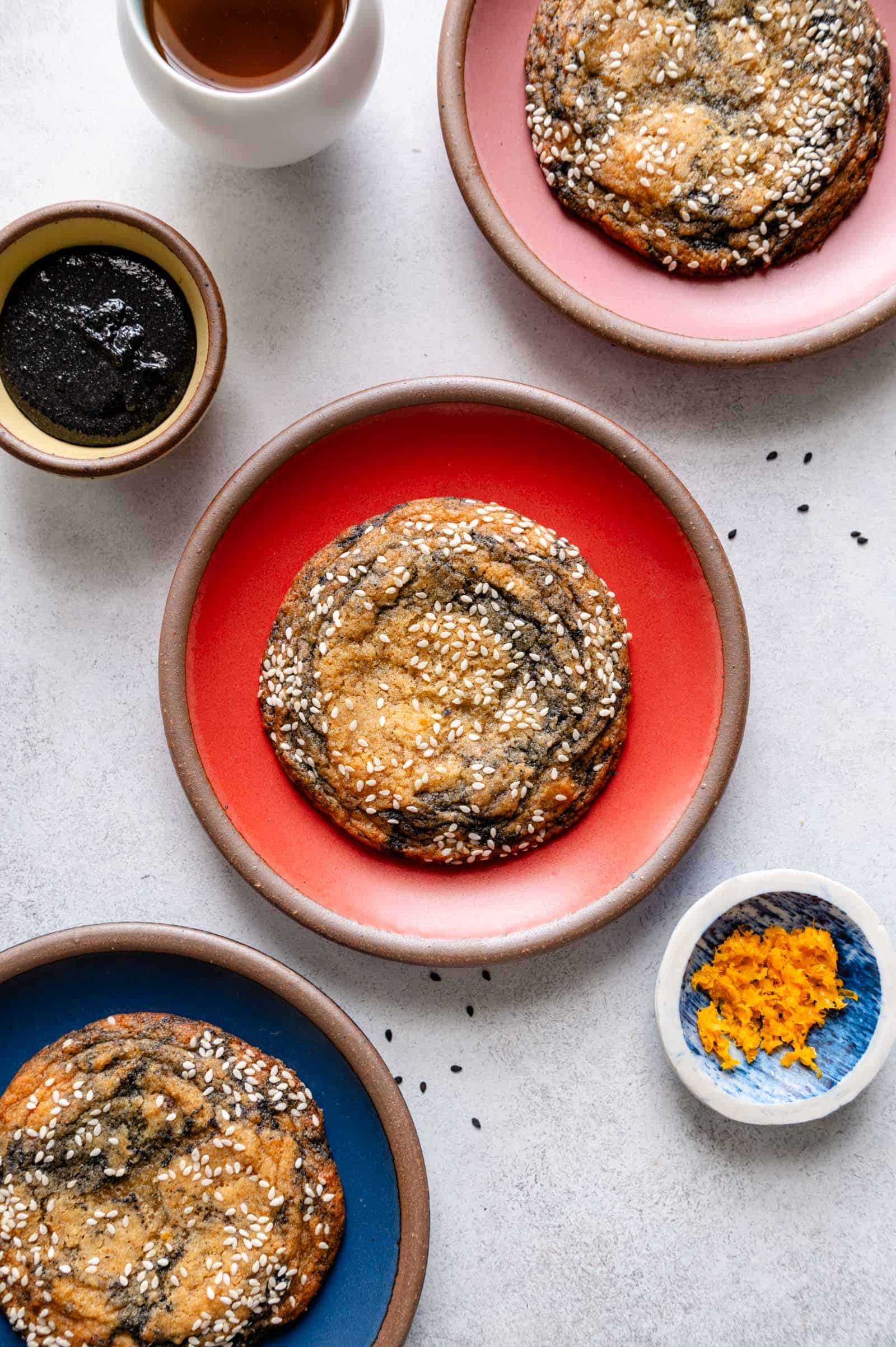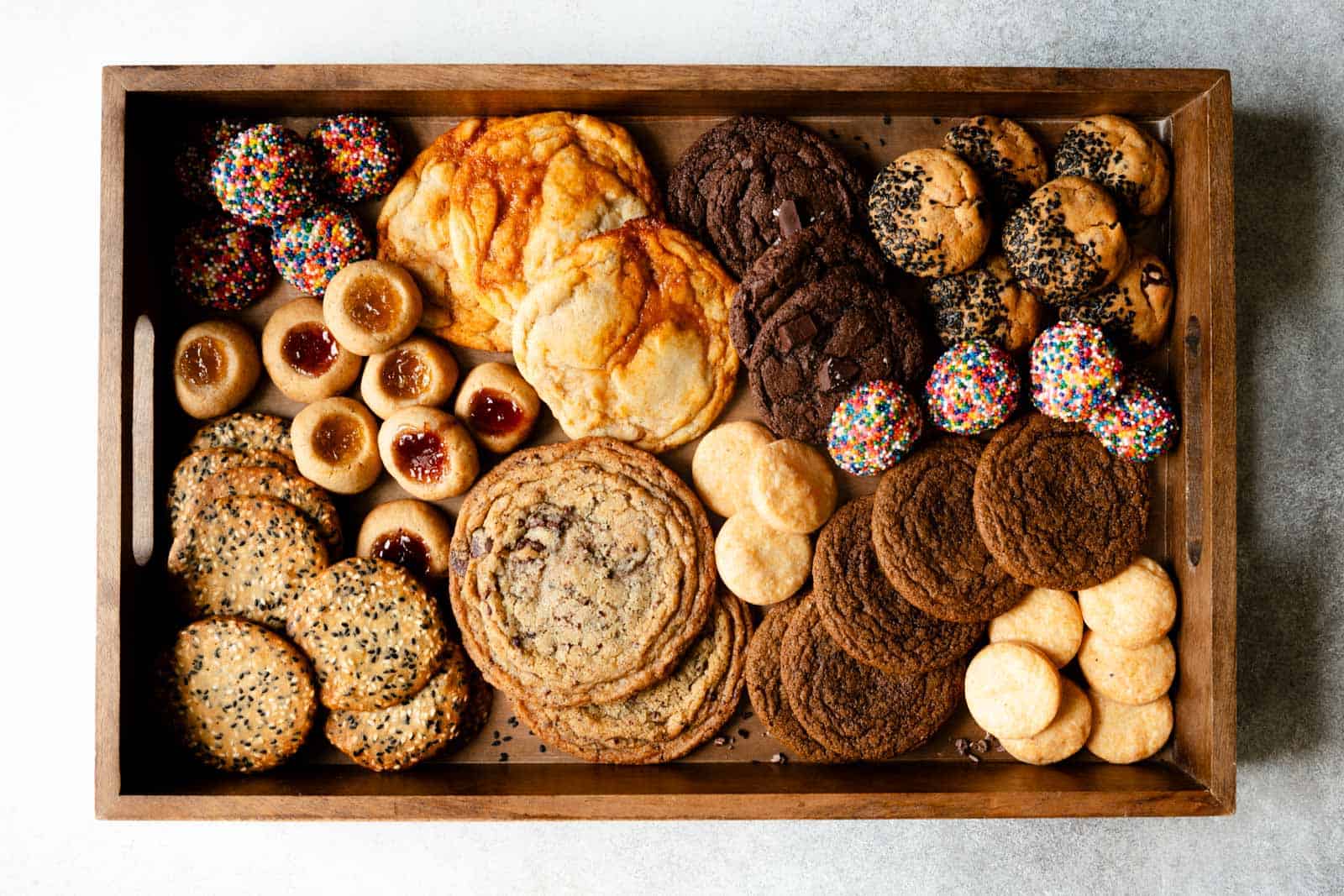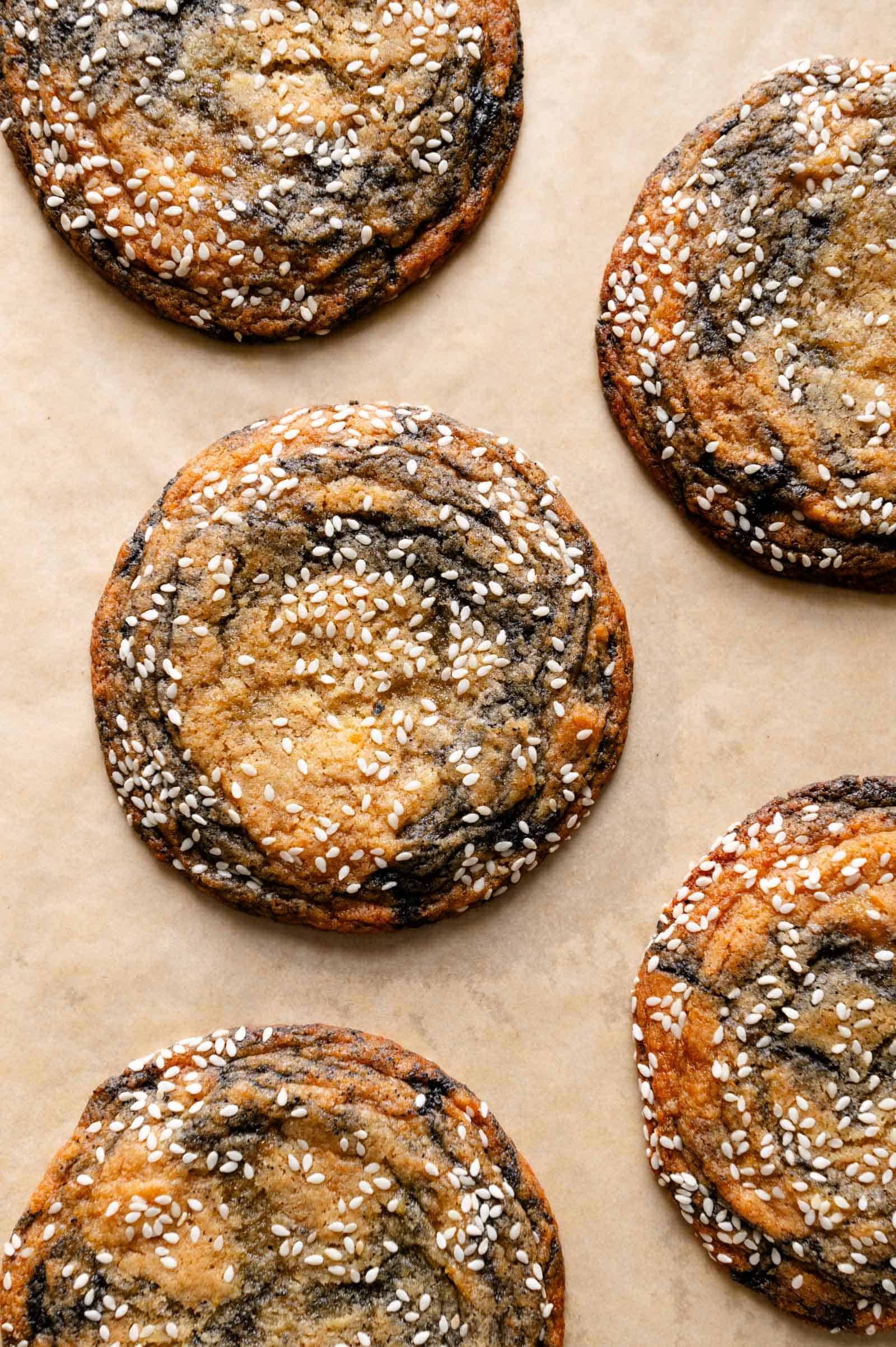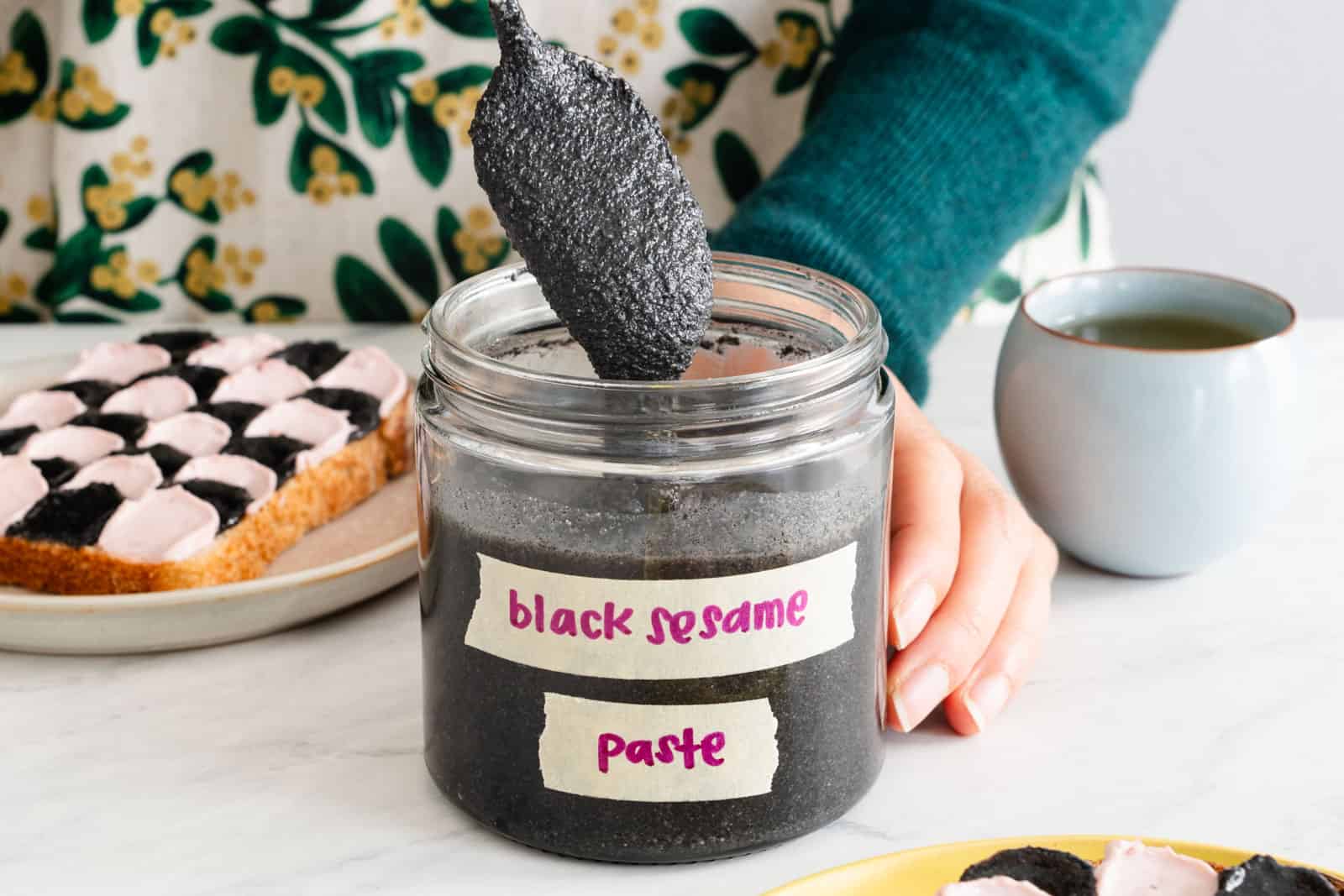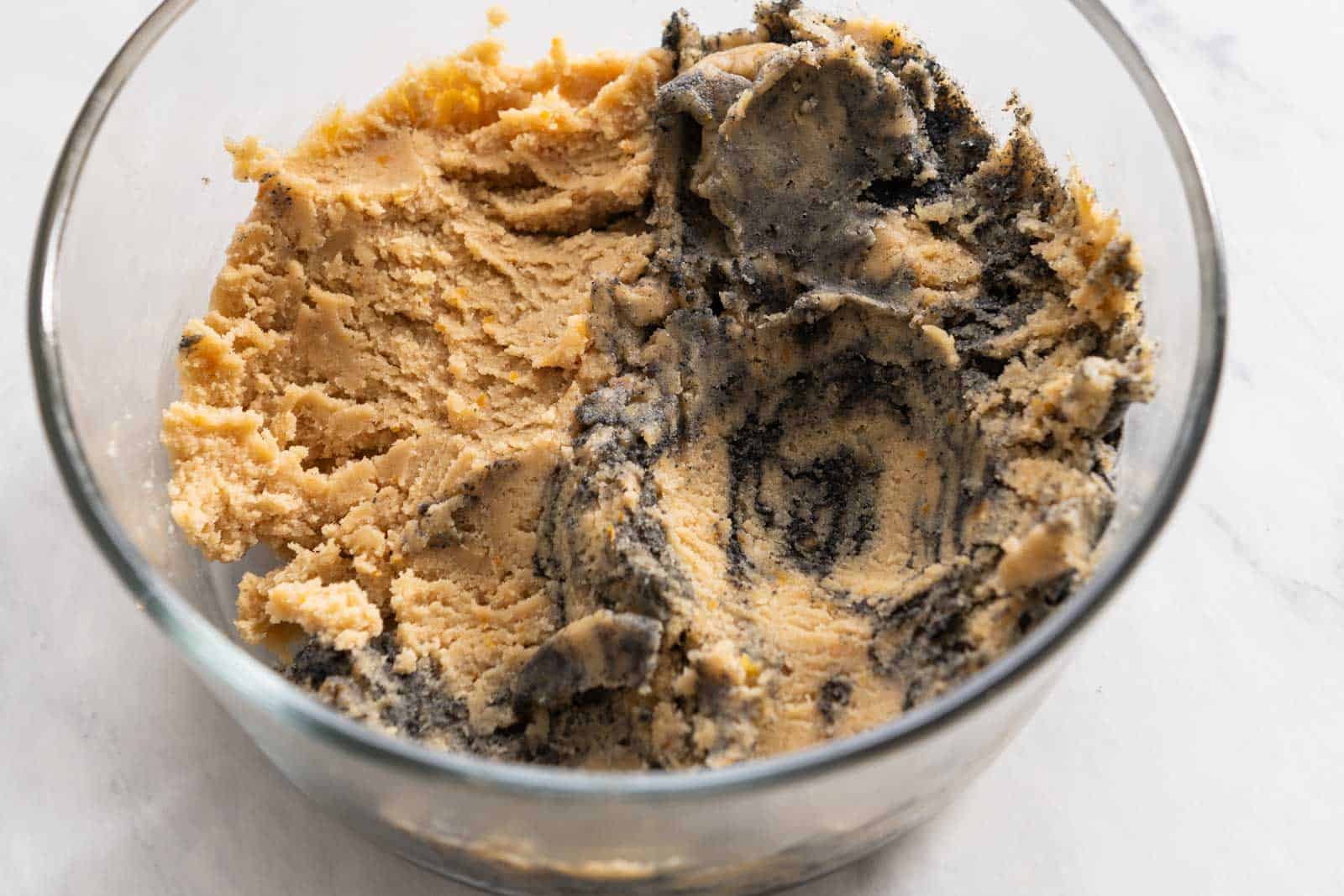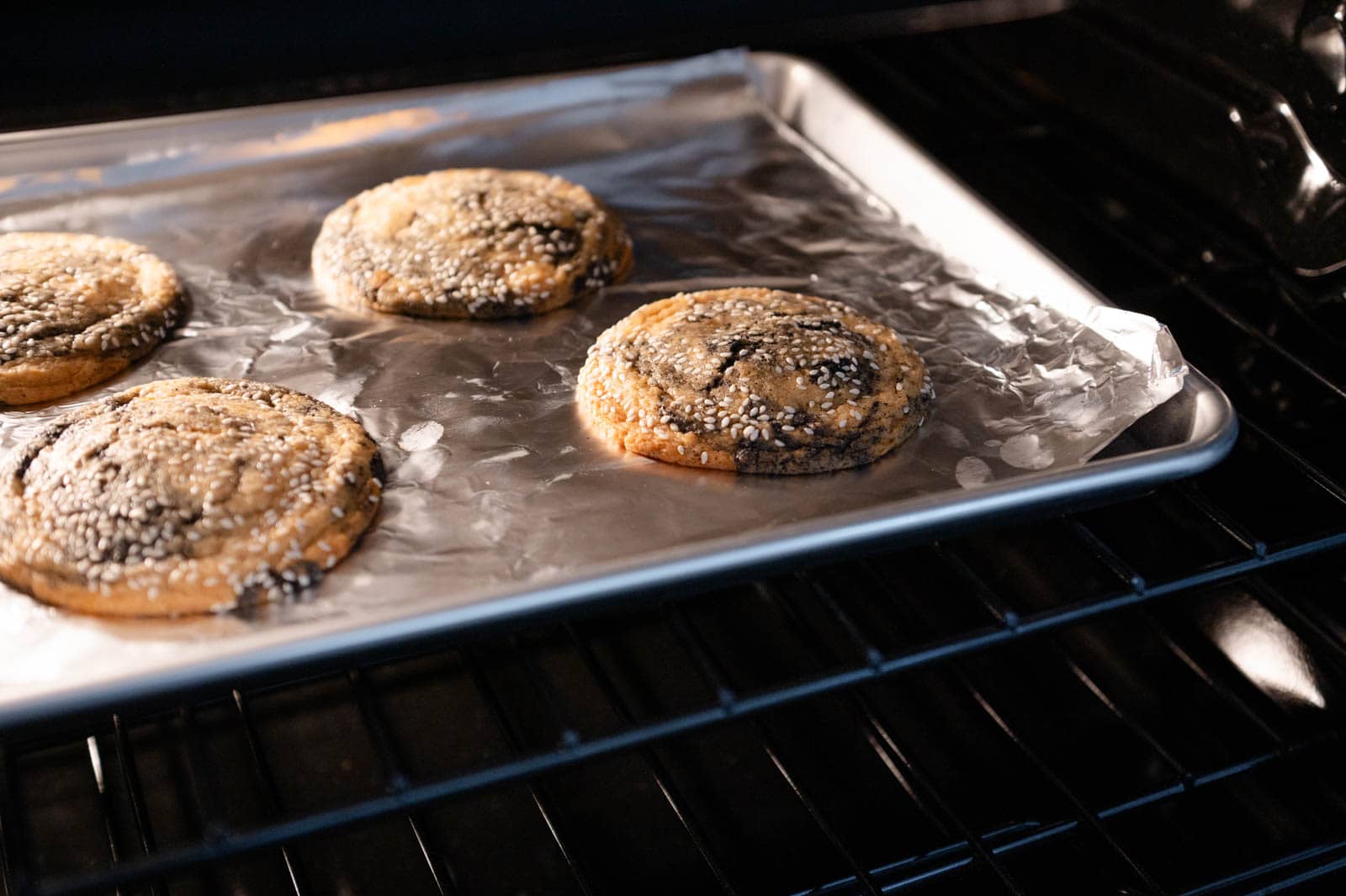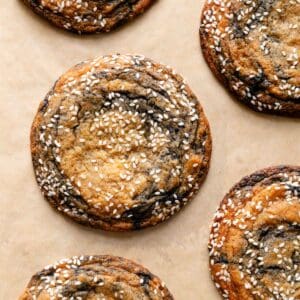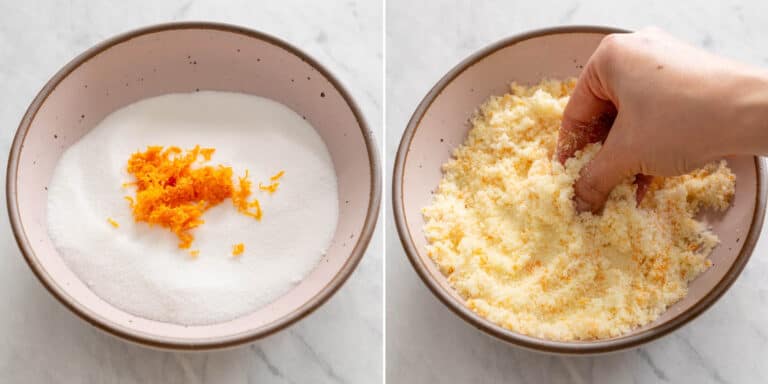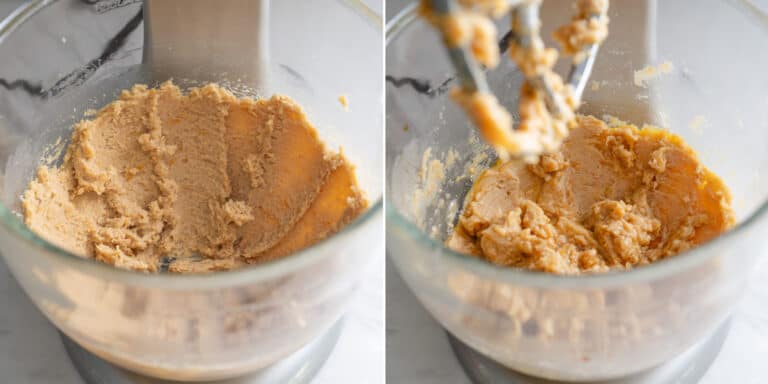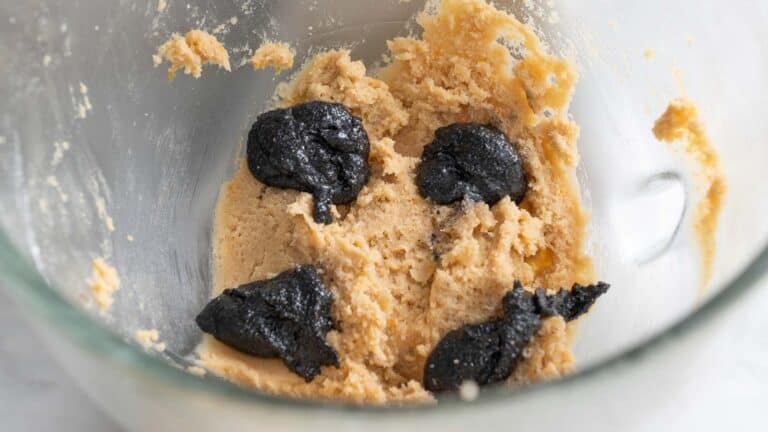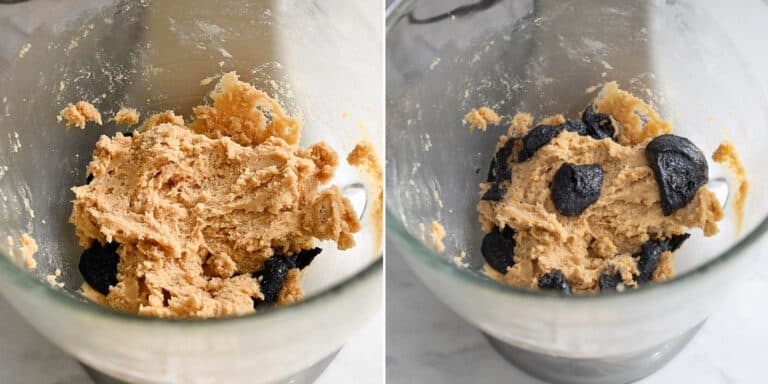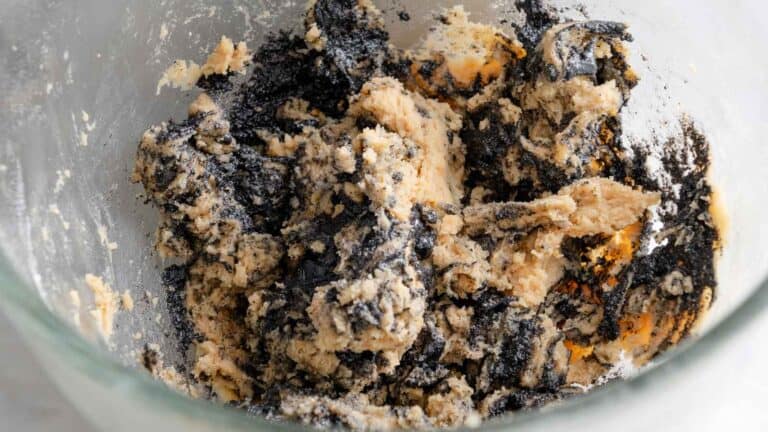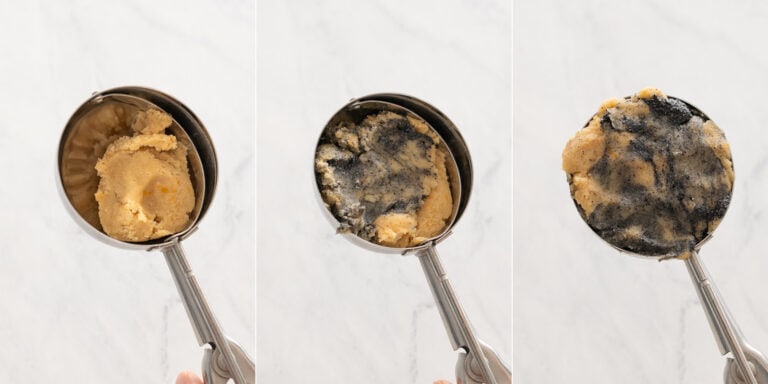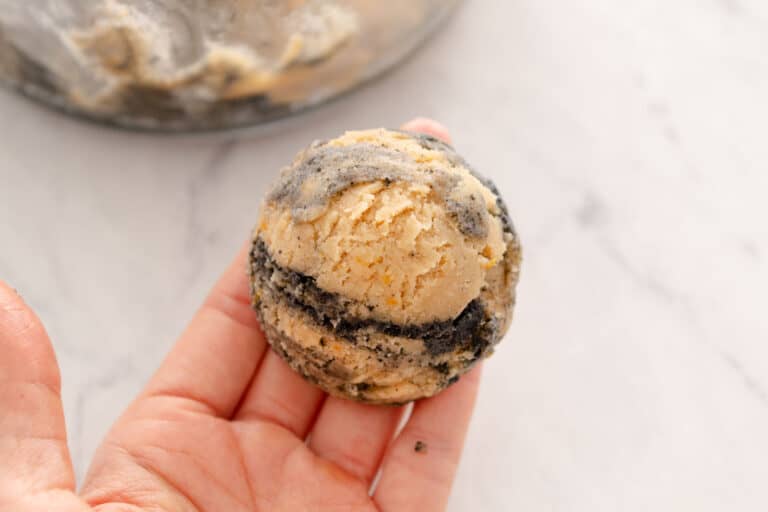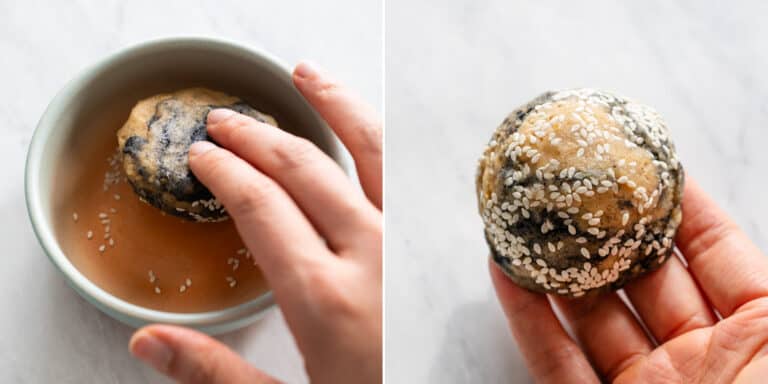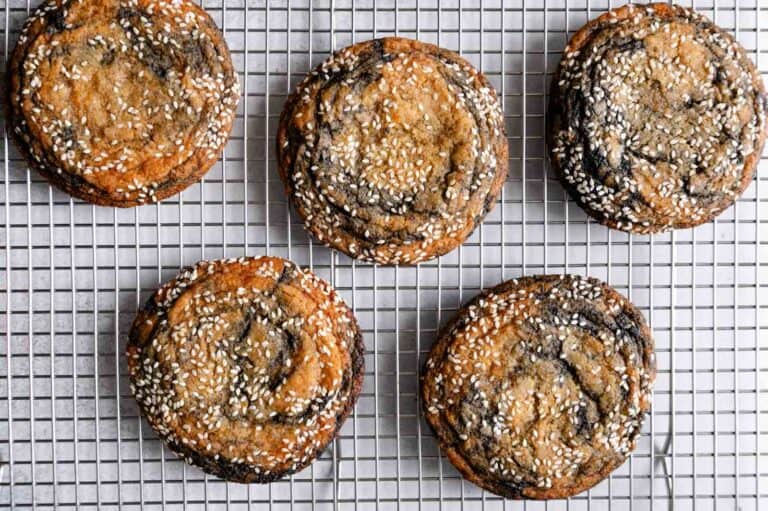I enjoy cooking other food writers’ recipes because it gives me an opportunity to learn different cooking techniques and try new flavor combinations. For instance, I never tried Sarah Kieffer’s technique of banging the cookie sheet pans on the oven rack during the baking process to create ripples on the cookies. While baking Irvin Lin and Eric Kim’s cookies, I incorporated savory fermented pastes into cookie dough for the first time and loved the complexity of flavors these pastes added to the cookies. Drawing inspiration from all the cookies I baked recently, I decided to develop a black sesame cookie recipe that incorporates my homemade black sesame paste. I used Sarah Kieffer’s cookie recipe as a starting point because I loved the rippled look of the cookies. For the most part, I’ve kept the same butter, flour, and sugar ratios that she used to make sure that these black sesame cookies rippled as well. However, I reduced the butter slightly for less greasy cookies. I also wanted the cookies to be less sweet, so I borrowed Irvin Lin’s idea of adding miso to the cookie dough. From there, I played around with adding soy sauce and loved the additional complexity that the soy sauce delivered. In these black sesame cookies, you’ll be able to taste the brightness of orange zest against the nutty aroma of the black sesame paste. The miso and soy sauce will not be prominent flavors in the cookies but they are very important in balancing out the sweetness of the sugars. I have gotten a lot of positive feedback from my family, friends, and husband’s co-workers about these cookies! I hope you get a chance to enjoy them, too.
COOKING NOTES FOR BLACK SESAME COOKIES
BLACK SESAME PASTE
When testing this recipe, I used my homemade black sesame paste. I highly recommend that you make my black sesame paste to get similar results. If you want to buy a black sesame paste, I recommend using one with a similar consistency to recently stirred natural peanut butter (not too thick and not too runny). The black sesame butter from Rooted Fare should work with this cookie recipe. One important note: their sesame butter contains peanuts, so don’t use it if you or someone you know has a peanut allergy.
MISO & SOY SAUCE
There are many varieties of miso paste and soy sauce out there, so let me explain the types I used. For my everyday cooking, I tend to use this white miso paste from Miso Master. They also sell a “sweet white miso,” which contains slightly less sodium and will work for this black sesame cookie recipe. Other brands of white miso should work well for this recipe, too. In terms of soy sauce, I used Lee Kum Kee’s premium soy sauce, which is a variety of light soy sauce (生抽). Other brands of light soy sauce should work, too. Most importantly, don’t use dark soy sauce for this recipe, as it has a funky fermented flavor that will be too strong in this cookie dough.
MIXING ORANGE ZEST WITH SUGAR
To brighten up the flavor of the cookies, I added orange zest to the dough. Orange zest can clump up very easily, so I like to work the zest into the granulated sugar by rubbing them together with my fingers. I got this idea from Billy Green’s Strawberry, Grapefruit & Poppy Seed Pie Bars recipe. The sugar becomes so lovely and fragrant during the process.
SWIRLING THE BLACK SESAME PASTE
The most difficult part of developing this recipe was figuring out how to incorporate the black sesame paste into the dough to yield visually appealing cookies. I wanted there to be distinct streaks of black sesame paste on the cookie. However, I quickly discovered that overmixing the paste into the dough will turn the dough dark gray. After many test batches, I found that the best solution was to mix some of the dough with the sesame paste and leave some dough unmixed. To add black sesame paste to the dough, dot tablespoons of sesame paste over the dough and turn the mixer on low for 2 to 3 seconds. You do not need to mix the dough any longer than that! (By the way, I got this idea to dot the paste from Amisha Gurbani’s Black Sesame Chocolate Chip Cookies with Orange recipe.) Chill both types of dough in the fridge for several hours or overnight. When it’s time to shape the cookie dough, use a large cookie/ice cream scoop and alternate between scooping up dough with black sesame paste and dough without paste. By layering the different types of dough inside the cookie scoop, you can see the black sesame swirls more clearly, as it contrasts with the unmixed dough.
PAN-BANGING TECHNIQUE
To create the ripples in Sarah Kieffer’s cookies, you need to bang the sheet pan inside the oven several times during the baking process. When the edges of the cookies puff up and you bang the cookie sheet against the oven rack, the cookies will deflate and create a ripple or wrinkle line in the cookie. Repeating this process at 2-minute intervals creates multiple ripples in the cookies. Warning: the banging process is quite noisy, which my cat Loki did not particularly enjoy. I wanted to replicate this rippled effect in my cookies, so I’ve used similar cooking times as Sarah Kieffer. These black sesame cookies won’t have quite as many defined ripples as Sarah’s cookies because I added miso paste to the dough and used less butter. Nevertheless, you should see ripples on the cookie.
IS THE BANGING NECESSARY?
In short, no, it is not necessary. You can still get delicious, chewy cookies without banging the cookie sheets at all.
USING FOIL VS PARCHMENT PAPER
Sarah Kieffer suggested using foil in her cookbook (affiliate link) to get cookies with better ripples. I tested these black sesame cookies on foil and parchment paper. Cookies baked on both surfaces had nice ripples, but I preferred cookies baked on foil. The cookies baked on foil rippled a little better and puffed up more in the center. The puffier center meant the cookies were chewier. Cookies baked on parchment paper tended to be 1/4 to 1/2 inch wider. Having said all this, unless you do a side-by-side comparison, it’s difficult to tell the difference between cookies. In a blind taste test, I would not be able to tell which cookie was baked on foil or on parchment paper. One important note: the cookies tend to stick to the foil, so you’ll need to slide a large flat spatula under the cookies to lift it off the sheet. It shouldn’t be too difficult to do. If you want to err on the side of caution, line your baking sheet with parchment paper instead.
CAN I MAKE THE DOUGH AHEAD?
Yes! As a matter of fact, I like to make the dough a day ahead to break up the work. You will need to bake the cookies within 2 days though. I noticed when I baked cookies with dough that’s been sitting in the fridge for more than 2 days, the cookies didn’t spread and ripple quite as well.
CAN I FREEZE THE DOUGH?
Yes, you can shape the dough and freeze it. Transfer the cookie dough into a bag and store for several months. Because these cookies are pretty big, you’ll want to let the dough sit on the counter for 30 to 45 minutes to defrost slightly before baking.
